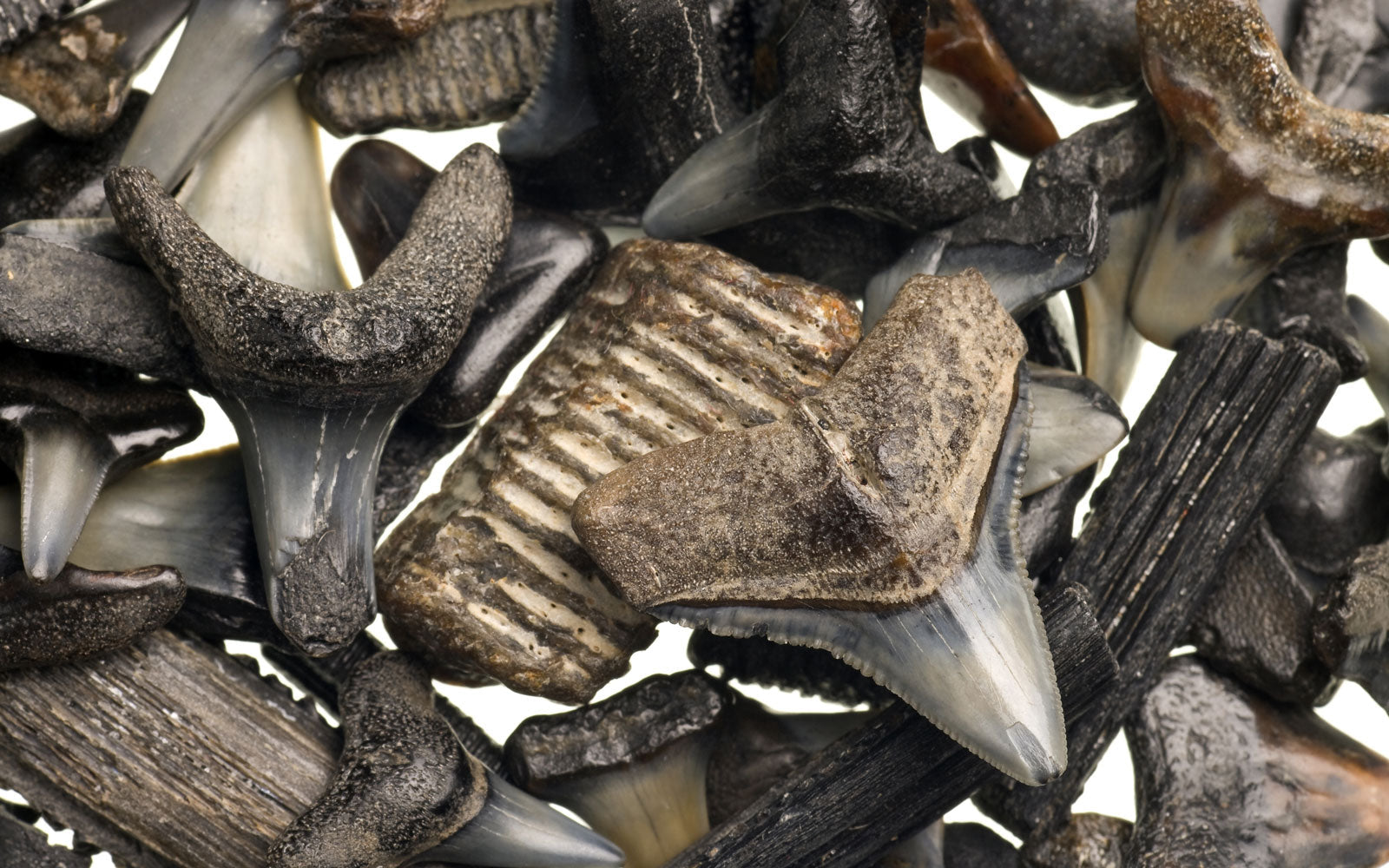
Auriculatus Sharks: What Everyone Needs to Know
It has been said that we know less about the ocean and what lies within it than we do about outer space. The ocean really is the greatest last frontier. Shark teeth are one of the few tangible ways we can hold a piece of the ocean’s history and understand more about its past and who roamed its depths.
Everyone knows about the big, bad megalodon shark, but have you heard of its great-grandfather, the auriculatus shark? It’s time to take a deep dive into this unknown ancient beast of the sea.
What is an Auriculatus Shark?
Auriculatus sharks are an extinct species of sharks that lived during the Eocene Epoch, which was a part of the Paleogene Period. Auriculatus sharks are approximately 23 million years old and are a relative and predecessor of the larger-than-life megalodon shark.
Although not as big as the megalodon, auriculatus sharks ruled the ocean, spanning up to 30 feet long. Like most modern-day sharks, auriculatus sharks were excellent predators, feasting on smaller sharks, fish, and various ocean wildlife.
Auriculatus Shark Teeth
Auriculatus sharks are part of ocean-dwelling predators called mega-tooth sharks due to their massive teeth size. A distinctive feature of these shark teeth was their coarsely serrated edges and unique serrated side cusps. Auriculatus shark teeth are argued to be the first of the mega-toothed sharks to have serrations on the entire blade of the tooth and not just one side!
How Big are Ariculatus Shark Teeth?
The size of these shark teeth spans from approximately one to five inches in length. For comparison’s sake, megalodon shark teeth range from three to seven inches. But remember, ariculatus sharks came before megalodon sharks, so these deep-sea swimmers paved the way for bigger teeth to come!
Are Auriculatus Shark Teeth Rare?
Auriculatus shark teeth are considered to be rare, so count yourself lucky if you can get your hands on one! These shark teeth are only found in a couple of places and take more skill to discover than just walking down a sandy beach.
The majority of auriculatus shark teeth come from North Carolina, South Carolina, and Morocco. There have also been some of these shark teeth found in Kazakhstan, Peru, and the United Kingdom.
What To Do with Ariculatus Shark Teeth
- Give a shark tooth as a gift
- Decorate your home or office with an ariculatus shark tooth
- Buy a shark tooth as a souvenir to commemorate a vacation
- Grow your shark teeth collection
- Wear shark teeth jewelry
Why Do People Collect Shark Teeth?

There are multiple reasons why people collect shark teeth, but regardless of the reason, most collectors will agree that once you start collecting, it’s hard to stop! Shark teeth help us understand a world gone by, and it is exciting to be able to have a piece of what once was.
Due to the ariculatus shark teeth being rare and harder to acquire, they can have monetary value and are a good investment. Shark teeth are also fun to collect, whether walking the beach and digging up your own shark tooth treasure or finding the perfect shark tooth collectible at a store. Shark teeth collectors are also drawn to the meaning and symbolism behind shark teeth - that of protection, strength, and luck.
How Do I Take Care of My Ariculatus Shark Tooth?
Most shark teeth have survived millions of years under various conditions and are somewhat indestructible. However, that doesn’t mean you shouldn’t put some time and attention into caring for and maintaining your ariculatus shark tooth or your entire shark teeth collection.
In order to show off those beautiful chompers, it is important to keep them clean, dry, and away from long exposures to extremely hot or cold temperatures. Dust your shark teeth from time to time with a clean, dry, lint-free cloth. A lint-free cloth is important as other fabric types may get snagged on the serrated edges of the auriculatus shark teeth.
Shark teeth collections can be displayed in various ways to show off their size, shape, and intricate details. Different display options also allow for shark teeth to be kept safe, dry, and intact while showcasing them for all to see! A shadow box, glass display case, glass top coffee table, or different stands are all perfect options to bring out the best in your shark teeth collection.
Why Aren’t Auriculatus Shark Teeth White?
Pearly whites are what most humans aspire to when it comes to teeth, but when it comes to shark teeth - the darker the better. In most cases, the darker the shark teeth are, the older they are.
Once shark teeth fall out, they land on the sediment of the ocean floor and start absorbing the minerals in the sediment. This sediment is typically gray, black, and brown, which are the colors we see in fossilized shark teeth!
7 Surprising Facts You Never Knew About Shark Teeth
- Shark teeth are not as strong as human teeth. Sharks’ teeth don’t have roots, which means they fall out easily. What makes a shark bite so powerful is their jaw strength.
- Shark teeth were useful tools and weapons utilized by ancient people groups. Shark teeth were used as daggers, knives for food, arrow tips, and spades for digging.
- The are four types of shark teeth: dense flattened, needle-like, pointed lower and triangular upper, and non-functional.
- During the Renaissance era, shark teeth were highly valued and thought to have medicinal significance. They were used as the antidote for snake bites or poisoning and made into powder and sold as remedies for plagues, labor pains, epilepsy, and bad breath.
- The sex of a shark can be determined by the size of its teeth. Female sharks usually have larger teeth due to their larger body size.
- It takes approximately 10,000 years for a shark tooth to become fossilized. Auriculatus shark teeth fossils are much older than that!
- The Smithsonian has the largest shark teeth collection, boasting over 90,000 shark teeth fossils!
There is so much to learn and enjoy about shark teeth. Whether walking down the aisle in search of an ariculatus shark tooth collectible or feeling the sand between your toes as you hunt for one at the beach, they bring endless joy and excitement of the unique treasure that could be waiting!


